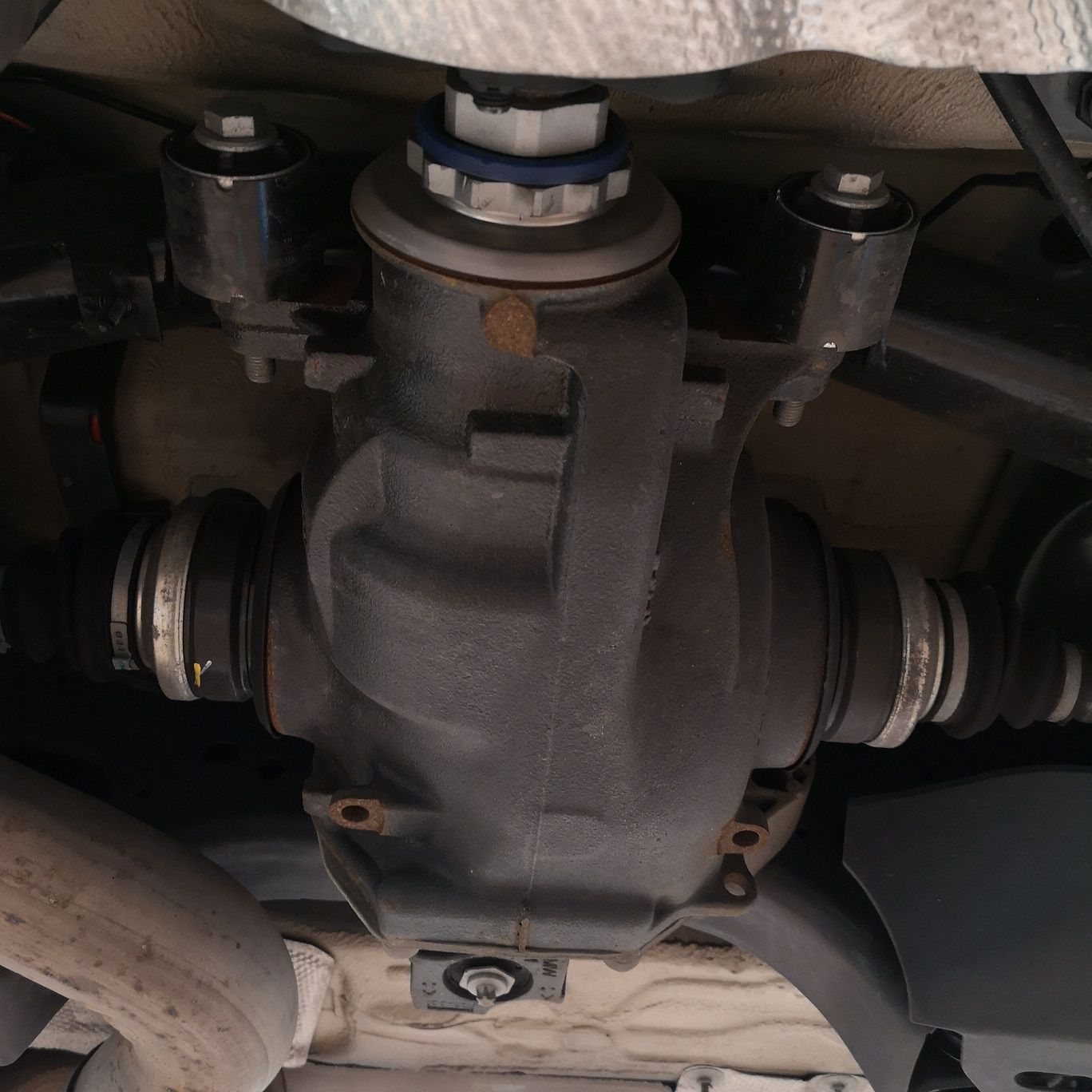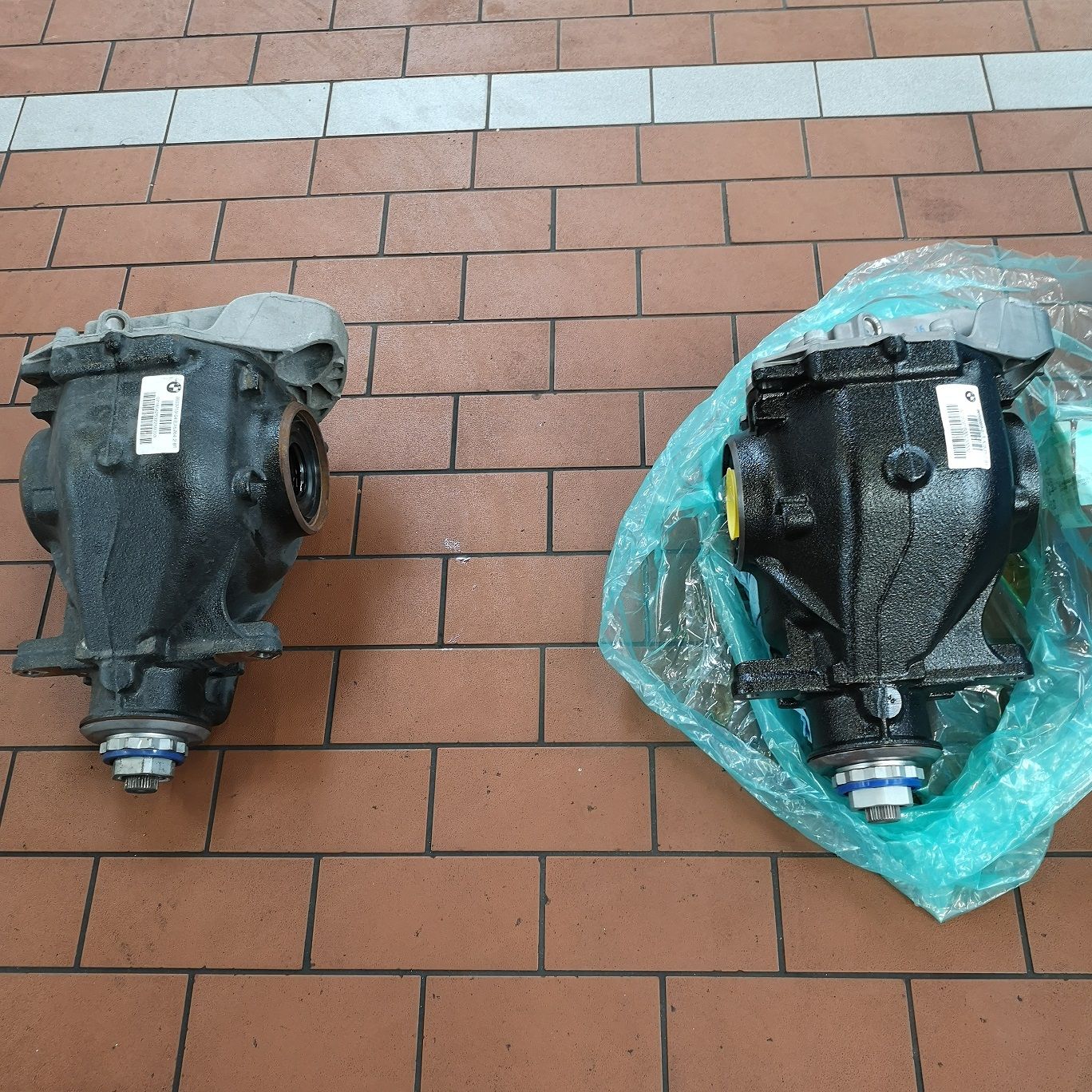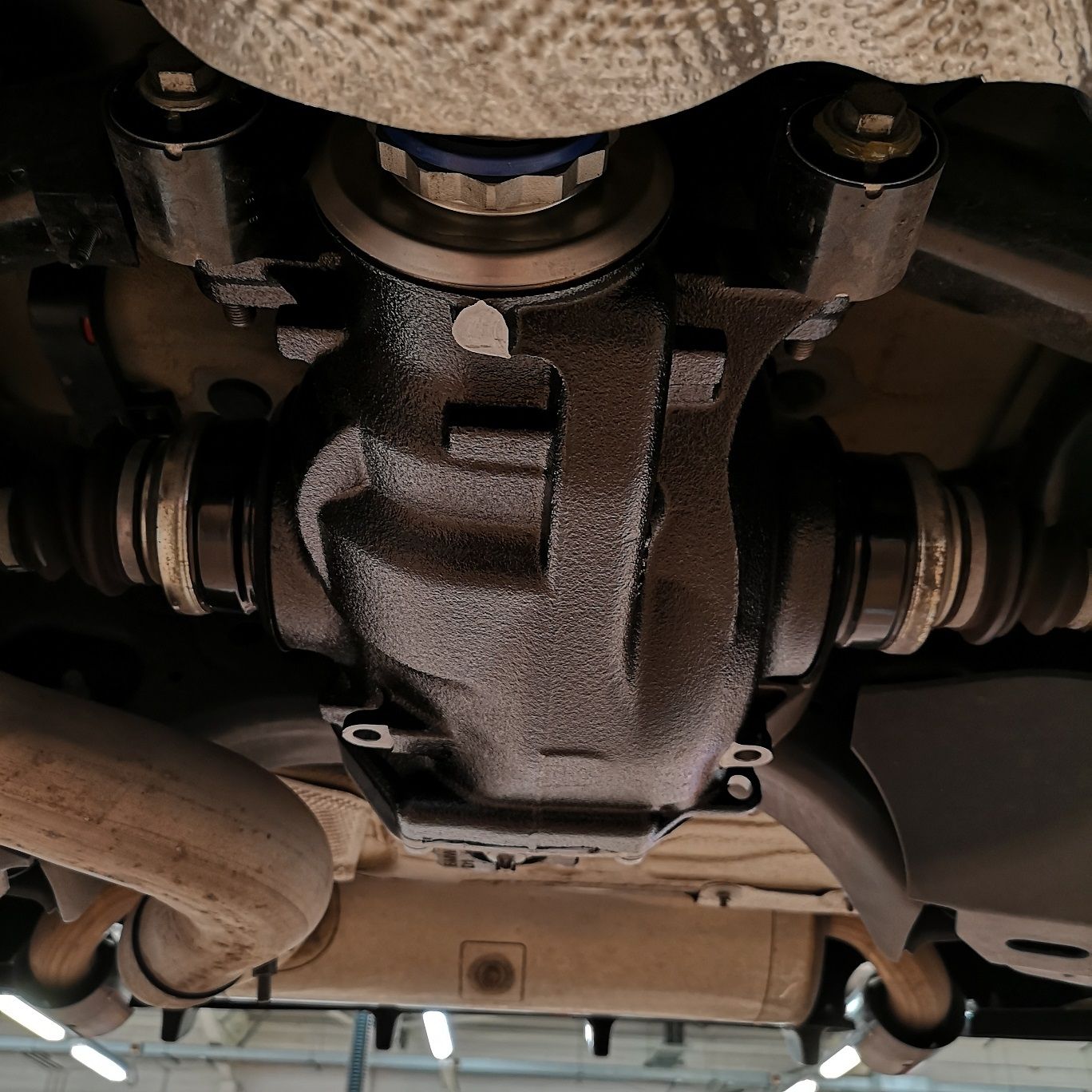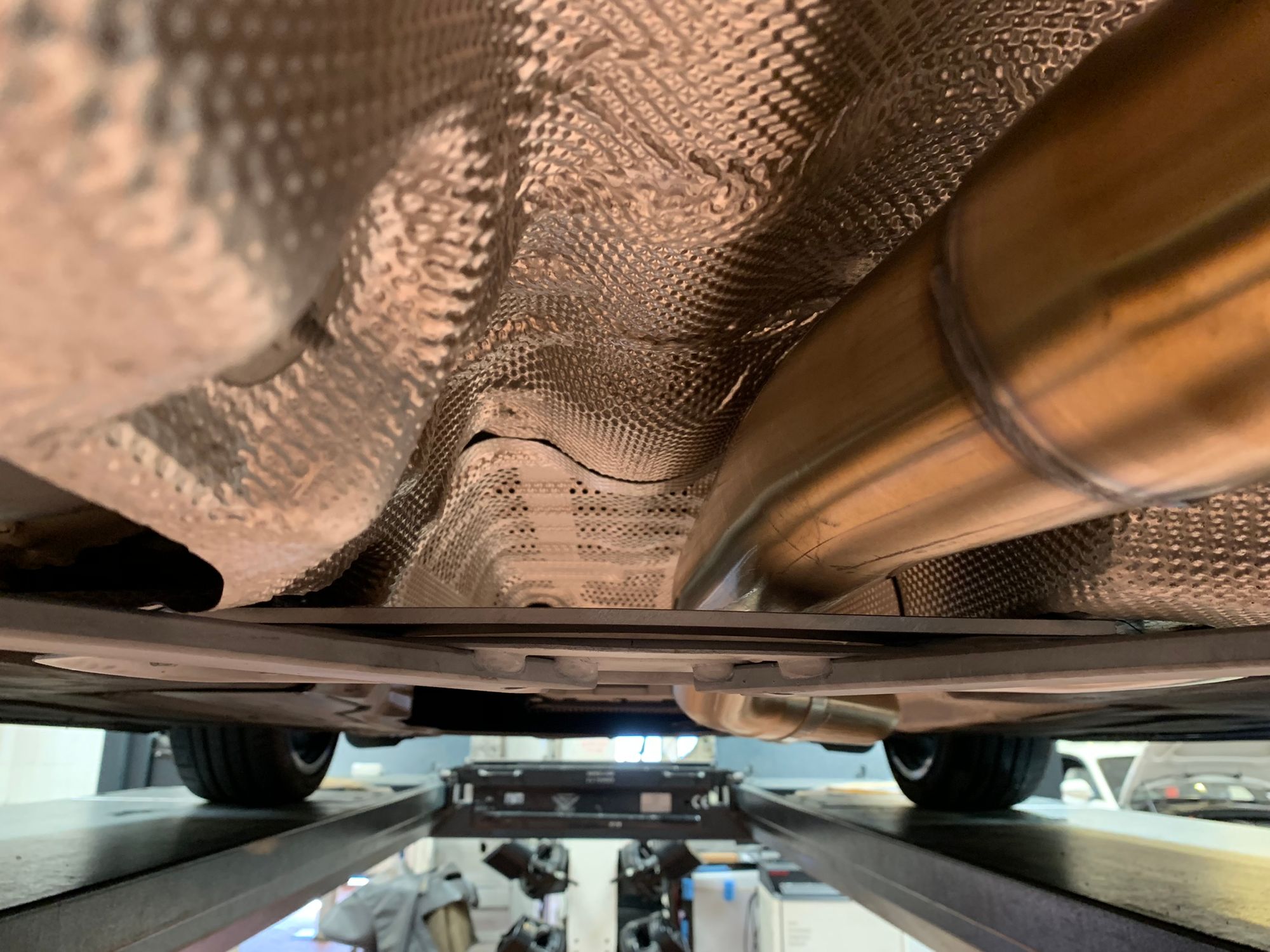Time for things to get serious! In Part 4 of the project we're going to be making some quite big changes to the car and getting a little more technical too. Handling and stability are the first port of call and then we're going to be squeezing out the first dose of extra power 😎
The series
Following on from Parts 1-3 this latest edition will include some pretty hefty changes to the vehicle. Many people with performance vehicles will chase power numbers and overlook a lot of other aspects like handling and stability. There's no point in having an exceptionally powerful car if you can't actually use that power. I'd rather have less power and more of it be usable than have some insane power number that I can never fully take advantage of. On that note, let's dig in.
M Performance Limited Slip Differential
As I said, there's no point having loads of power if you can't use it and one of the biggest shortcomings of the M140i for me was always the differential. The purpose of a differential is simple in essence: there is one output shaft from the engine that's spinning and you somehow need to connect that to two separate wheels that need to spin. Of course, there's a load more stuff in the middle like the gearbox/transmission and we're going to overlook that until a later post, but for now, the diff.
The M140i comes with 335bhp (250kW) as standard, it also has 369lb/ft (500Nm) of torque and.... an open differential... For the mechanically inclined amongst us I will let you peel your face from your palm and for everyone else, please allow me to explain. My car is rear wheel drive, yours may be front wheel drive, but many cars only deliver power through 2 of the wheels. Imagine I put a jack under the rear of my car on the left side and lifted the rear left wheel so it wasn't touching the floor. If I put the car in gear and tried to drive forwards, you might expect some kind of disaster but all that'd happen is the back left wheel, the one in the air, would spin freely and the the rear right wheel would do... nothing. With an open differential the power is always sent to the 'wrong' wheel, the one with less traction, and this is a characteristic of their design. This is an extreme example, yes, but imagine in a hard corner when the weight of the car is significantly shifted to one side. One wheel has lots of pressure on it, lots of traction, and the other wheel has very little. This results in the inside wheel losing traction and spinning which isn't good because now you have even less traction and you're engine is busy spinning a wheel doing nothing and not actually driving you forwards. This problem gets worse as your engine has more power because it's more likely to be able to break traction and spin the inside wheel. Now yes, traction control and other computer wizardry will step in to save you, but it can't make you go faster, it will just try to stop you spinning out and crashing, which is nice, but I want usable power and that means the differential needs to do better and not do silly things like spin wheels just because they have less traction.
If you're interested in more about the mechanics of a differential then I'd recommend this video from Engineering Explained which is quite old but Jason has a heap of amazing content that I've probably watched hours of.
If you want something really cool that will go from the very basics then check out this video from 1937. (Yes, really, 1937!)
So, as the title of this section suggested, I'm going to be installing the BMW M Performance Limited Slip Differential, or an 'LSD' in common language between car geeks. An open differential, like the one that came with my car, will allow one wheel to be stationary and one wheel to spin at full speed. That's the example I gave above with lifting one wheel off the ground. It's terrible. A limited slip differential, or LSD from now on, will still allow the two wheels to rotate at different speeds (which is essential for cornering) but it will limit the maximum difference in speed (or more specifically torque) between the two wheels. That means in the example above where we had one wheel at 0% speed and the other wheel at 100% speed, something different would happen. Instead, we could expect one wheel to spin at 70% speed (the one in the air) and the other, the one on the ground, to spin at 30% speed giving us actual forward movement. This means in my crazy example scenario above the car would still be using power to move forwards. Just because we have one wheel in the air it means we wouldn't be stuck in place. Jason over at EE also has a great video on how LSDs work and again, it's recommended watching.
I guess the TLDR is that an LSD can put power to the ground more reliably. Rather than wasting time spinning a useless wheel, like an open diff, an LSD will put power to the wheel that is capable of moving you forwards, and moving forwards is what we want.
*Note: I could write a whole series of blog posts on differentials and the different types of differentials and the differences between them (how many 'diff's?!) but that's not what this is about and I am aware I took some liberties here on my over simplified explanation. Please, no keyboard warriors in the comments... If you are interested, the MP LSD is a Torsen Differential and other common types include the Viscous LSD (which my track car has), the Clutch LSD and the Torque Vectoring Differential.
The M Performance LSD can be bought online from performance car part suppliers or directly from BMW. As my car was still in warranty I bought the part from BMW and had them fit it to maintain the warranty on the drivetrain. Here's a shot of the existing open differential from under the rear of the car.

At the top of the image is propeller shaft, or prop shaft, which is coming from the gearbox/transmission. This delivers the power to the diff and the diff then splits it to the two wheels, and you can see two driveshaft coming out of each side of the diff which go to each of the rear wheels. One shaft in, two shafts out, the basic principle of a diff. Of course, to replace the diff, we need to remove the old one, so here's the old one removed and the prop/drive shafts hanging loose.

The housing for the new LSD is identical, it's just the internal components that are different so here is the original open diff on the left, the new LSD on the right and below that, the LSD fitted to the car.


Once installed there's nothing really to 'see', but there's sure as shit something that you can feel when driving it. Many people have asked what the 'best' mod I've made to a car is or what they can do to make their car go quicker and honestly, if you're serious about driving, it's hard for an LSD to not be in the top few recommendations (driver training is always the first thing though). To show you what I mean, here is a snippet from the technical information sheet provided by BMW regarding the MP LSD:
- Turns curves into an experience: The M Performance limited slip differential is ideal for a sporty driving style on a race track. It helps ensure excellent handling of curves and faster acceleration out of bends.
- The handling of the vehicle becomes more defined – it is therefore significantly faster around bends
- Whether it's rainy, snowy or dry conditions – traction is improved for any type of road condition. If the driver disables all control systems, however (display: DSC deactivated/DSC off), careful driving is required in wet and snow conditions and is only recommended for closed-off areas.
- The limited slip differential is an additional, self-contained component that can be removed again at any time. Therefore, if the vehicle is resold, for example, it can be reequipped with standard equipment.
- The limited slip differential has been fully developed and tested. It meets BMW's high quality requirements.
- Simple installation: The M Performance limited slip differential can be easily replaced by a BMW dealer.
- The BMW M Performance limited slip differential is an original BMW component. Therefore, the warranty remains in effect and you can also keep your original differential.
You can get the idea here and it's hard to disagree with any of it. Applying power in a corner now results in the outside wheel 'driving' you around the corner rather than the inside wheel whipping itself into a frenzy and producing oversteer by the truckload. It's not a magic device, and I can certainly still get the back end to step out with a quick dab on the go pedal, but the difference before and after is night and day and the car should come with these from the factory.
Stiffening the chassis
With the LSD installed, and very soon more power on tap, the car will be having more forces applied to the chassis. As the rear wheels grip up and lay down more power, the surrounding suspension components have to work harder to keep everything in place. It might sound odd but the chassis of a car does twist and flex under load and whilst most people might not put a car under enough to load to cause this flex, or even notice it when it happens, it's certainly there. On the rear end of the M140i, under hard acceleration especially, I can feel it 'squirm'. I don't know what the technical term is nor how I would even explain it to you in words, but in some scenarios I can really feel that lack of stability in the rear end.
The reason I think this is more apparent in my car is that I have the F20 chassis, which is the 5 door and not the F21 chassis which is the 3 door. It's not a big difference, and the number of doors on a car doesn't have a direct effect, but there is a difference between the parts fitted to each variant. The F21 comes from the factory with an under-body brace fitted to the car that is not fitted from the factory on the F20. Presumably to save weight on the heavier 5 door variant, BMW decided to skip a step in the build process and not fit the brace to the car. The good thing for me is that they are the same chassis and as a result you can transplant parts from the F21 straight onto the F20 with no problems at all so I did a little research and found the part numbers.

As you can see, the 'tension strut' (brace) is listed in the parts catalogue for the F21 and even F22 chassis, but not my F20 chassis. Still though, I got the part number for the brace and the supporting components and had just one more thing to look at while I was here. Rumour has it that even more powerful BMW models, specifically the M2, M3 and M4 come with yet another part called a 'connecting support' that will also be a straight transplant to the F20 chassis. This is to be expected because car manufacturers do not want to keep designing and manufacturing new components if they don't need to so off to the parts catalogue again and I found it.

Yep, my car is definitely not listed there! Still though, I spoke to my local BMW dealership and after them telling that the part numbers I gave them were from the wrong car, and technically they are right, I convinced them it was my money and I want them to buy the parts and do the work. Here's the parts listing and cost including labour for everything.

So, what does this all translate to? Well, here's the before and after with the first image showing the car without the brace and the second image showing the car with the brace.


So the first change is probably the most obvious and it's the addition of the silver 'V' brace. It bolts up in the centre of the chassis with an anchor plate and then extends back to each rear wheel to brace the bottom of the suspension components. This reduces the flex by giving the rear end something solid to 'hold on to' and really does tighten things up. The second addition, which was the connecting support from the F8X chassis, is less obvious and we have to look side on to see it.

We're looking at the central anchor plate with the 2 parts of the 'V' coming in but between that and the chassis is a ~5mm thick plate sandwiched in the middle. This is the connecting support from the F8X chassis and is a seriously chunky plate. The extra thickness and thus strength offered by this plate reinforces the V brace and further reduces flexibility, resulting in quite a noticeable difference overall.
On the road this is another night and day transformation. I did the LSD and braces separately so I could see what each one did independently and they both made changes in their own way. The LSD can be felt in the corners a lot more and these chassis braces really shine through in straight line acceleration. I knew I wasn't dreaming this up though when my wife drove the car and even she noticed. As a non car person she's much less likely to notice minuscule (or imaginary) changes in a car so when she described the changes back to me, I knew the difference was notable. From a standing start using launch control it previously felt like the back end was squirming under all that load but now, it feels like it's bolted to a set of train tracks.
Stage 1 Tune
Ok, now we're getting to the good stuff, it's time for some more power! Tuning a car allows you to get more power out of it and different levels, or Stages, of tuning will require different amounts of work. This first step for me will be a Stage 1 tune, but here's the differences explained briefly.
Stage 1 - little to no modification, smallest power gain.
Stage 2 - usually requires breathing and other support mods, good power gains.
Stage 3 - often 'track' mods and not suitable for road cars, largest power gains.
I already have some breathing mods done to my car with the intake and exhaust done in prior work, but I wanted to ease into the tuning game not simply 'dial it up to 11' on my first go. There are also several different ways to tune a vehicle and extract more performance, each with their own advantages and disadvantages. The often cheaper way is with tuning boxes, little devices that plug into the car and different sensors, like the JB4 does, which is common for the M140i. These devices connect between various sensors in the engine bay and feed false readings back to the ECU in the vehicle, causing it to behave differently. If you want more fuel or air then the tuning box will read lower on those items causing the ECU to insert more of them and generate more power. I'm not a fan of these devices though and prefer to do things what I view as the 'proper way' which is with an ECU tune. These are often a little more expensive but going down this road means actually reprogramming the ECU to instruct it to behave in a different way rather than tricking it into behaving differently. My chosen tool for this job was going to be the BootMod3 B58 Tune.

The BM3 systems had the best reviews online and after looking at other options I settled with this. To flash your car you will need a laptop, an ethernet to OBD cable and the BM3 software you can download from their site after purchasing a license.

You can choose a single Off The Shelf (OTS) map from the wide variety of maps available for your car or do what I did and upgrade your license to include all OTS maps so you can play around with different versions as there are 13(!) available for the B58 engine alone. Looking at the Stage 1 maps first, there were 4 to choose from:

When you starting tuning your car you do need to be a lot more selective about the fuel you use because some of the improvements are coming from taking away the flexibility in the ECU and depending on a very particular type of fuel. A car has to work in so many different regions on such a wide range of fuel qualities and that flexibility costs power. By deciding to run your on a specific fuel type, your ECU can squeeze a lot more performance out of that particular fuel. It's easy to come across 93 octane (98 RON) fuel here in the UK, with Tesco Momentum and Shell V-Power both offering a 99 RON fuel. That means I could start with the Stage 1 93 octane map and see some pretty nice power gains already. As you can see in the description of the tune it also re-calibrates things like the Sport Display as they have a power and torque output gauge that needs their limits increasing so you don't go off the top of the readings with the new outputs.
I didn't take any pictures of the flashing process but it's a simple process of hooking up to the car and running the software. It's also a little cramped in the driver seat with a laptop and cables! I didn't dyno test the car with the Stage 1 tune either because I was planning to go further and dyno tests aren't cheap or local. I did go looking at other cars with the Stage 1 tune and consensus from the community seems to be an increase from 335bhp and 369lb/ft (250kW and 500Nm) up to 402bhp and 465lb/ft (299kW and 630Nm)! The butt-dyno would certainly agree 😎.
More to come!
The first steps for bigger power have been taken now and the car is certainly handling a lot better with the LSD and chassis brace. There's still more to do in the performance department and the handling department though so stay tuned for additional work in this area in future blog posts. For now, I think we can look forward to some serious work on the electronics in the next part and a little hacking!
Parts
Here's the list of parts used in Part 4 and where you can get them:
M Performance Limited Slip Differential
View all of the other blog posts here: The BMW M140i Project Series
